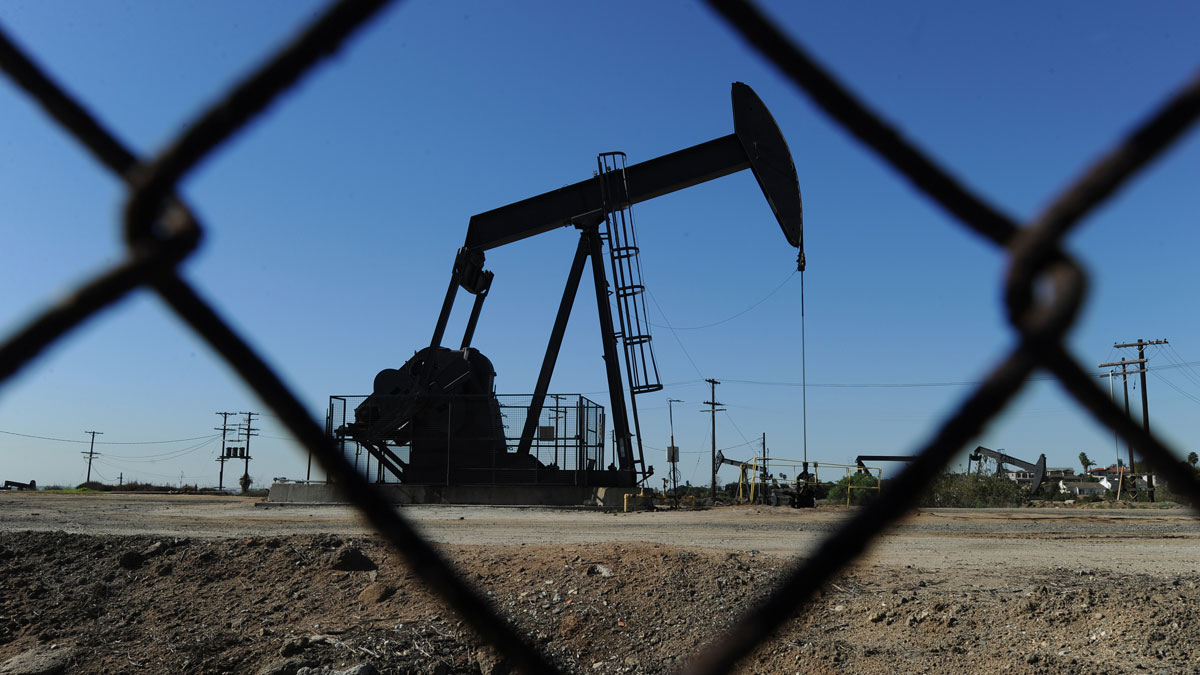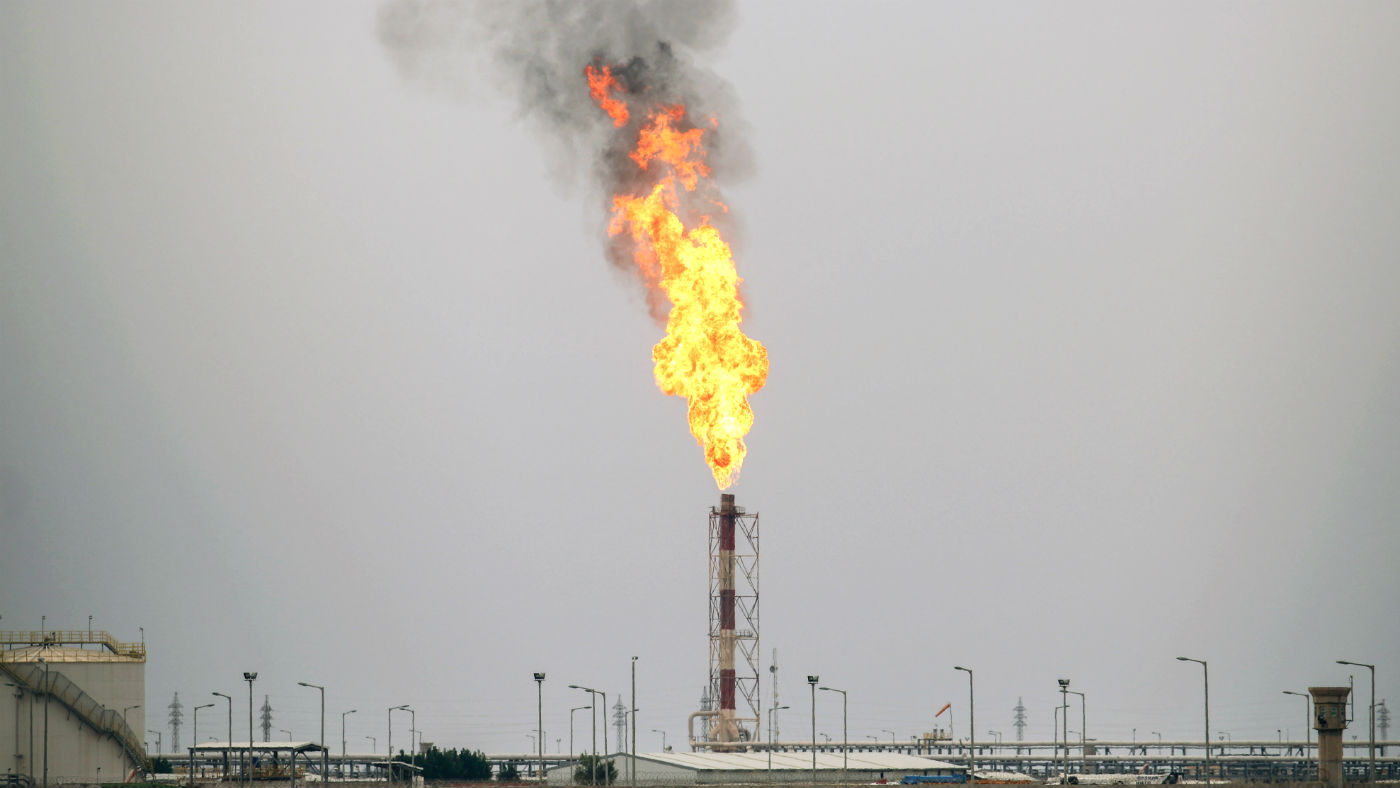Oil price posts two-year highs - but how long can it last?
Brent rose above $59 a barrel this week, its best third-quarter showing since 2004

Oil price heading for fastest weekly fall in a month
21 April
The oil price was "on course for its biggest weekly drop in a month" today, says Reuters.
Brent crude, the international oil price benchmark, was holding onto a slim gain and hovering marginally above $53 a barrel, while its US counterpart West Texas Intermediate was holding steady at around $50.70.
The Week
Escape your echo chamber. Get the facts behind the news, plus analysis from multiple perspectives.

Sign up for The Week's Free Newsletters
From our morning news briefing to a weekly Good News Newsletter, get the best of The Week delivered directly to your inbox.
From our morning news briefing to a weekly Good News Newsletter, get the best of The Week delivered directly to your inbox.
Both are looking at a decline of approximately five per cent for the past week - the fastest fall since 10 March, despite Khalid al-Falih, energy minister of de facto Opec leader Saudi Arabia, saying on Thursday that a handful of members "have reached a tentative agreement to cut more supplies", says Market Watch.
Reuters adds that both Saudi Arabia and Kuwait, "key members of Opec, favor extending their production-limiting deal with non-member producers into the second half of the year".
Normally, the idea of further output cuts is bullish for the oil price, which has been dragged lower for two and a half years because of a global supply glut.
But traders are doubtful over potential further cuts and that they will outweigh production increases in the US.
A free daily email with the biggest news stories of the day – and the best features from TheWeek.com
Russia, one of the key countries in the current deal, has also refused to say if it will go along with further cuts, adds Reuters.
Vivek Dhar, commodities strategist at Commonwealth Bank of Australia, said: "The length of the extension, the number of participating countries and the production to be sidelined remain key unknowns."
Oil price suffers worst day for six weeks
20 April
The oil price suffered its sharpest fall for six weeks yesterday, hitting its lowest level for two weeks as the US dollar rallied.
Market Watch says the reasons for the drop were largely technical, citing in particular the end of the front-month futures contracts for West Texas Intermediate (WTI), the US oil price benchmark.
Exacerbating this trend was a rally in the US dollar, which gained 0.3 per cent as a Federal Reserve report gave rise to trader speculation it is set to raise interest rates again in the coming months.
Oil is denominated in US dollars, so a rise for the greenback makes it more expensive to overseas buyers and is seen as negative for demand.
WTI ended the day close to four per cent lower and below $50.50 a barrel. Brent crude, the international oil price benchmark, fell 3.6 per cent to below $53 a barrel.
The fact that oil fell so readily and so fast is an indication of the volatility of sentiment in the market, which remains torn between output cuts by the Organization of the Petroleum Exporting Countries (Opec) and evidence of US production increasing, which could keep the supply glut going.
Today both benchmarks had recovered a little ground, with WTI at $50.87 and Brent crude at $53.43 a barrel.
That is in part a reflection of US regulator the Energy Information Administration (EIA) revealing yesterday that crude oil stocks in the US dropped by one million barrels last week.
At the same time, though, it reported that US production rose to 9.25 million barrels per day – which Reuters says is ten per cent up on where it was in the middle of last year.
Oil price turns positive again on further Opec cuts hint
19 April
The oil price has returned into positive territory this afternoon after two consecutive days of decline and being in the red again this morning.
By a little after 2pm, Brent crude, the international oil price benchmark, was up 0.2 per cent and back above $55 a barrel.
Its US counterpart, West Texas Intermediate, was up by the same margin at $52.50.
According to Reuters, the turnaround came after comments from "the secretary-general of the Organization of the Petroleum Exporting Countries (Opec) that the group was committed to cutting inventories to the five-year average".
This suggests the powerful cartel could extend its 1.2 million barrels per day of cuts beyond June, when a six-month deal with other major producers such as Russia comes to an end.
Altogether, the oil countries are currently pledged to cut 1.8 million barrels per day and compliance with the agreement is high.
However, production in the US is rebounding strongly and threatens to undermine the wider cuts and keep the market oversupplied.
Yesterday, the American Petroleum Association reported an 840,000-barrel decrease in inventories in the US last week, but said crude oil reserves "remained near record highs".
Meanwhile, "a monthly report from the Energy Information Administration forecast [US] output to rise 124,000 barrels a day in May to 5.2 million barrels a day", says Market Watch.
Phil Flynn, senior market analyst at Price Futures Group, said: "We may find that any US increases will be insufficient if OPEC extends cuts."
Oil price back on the front foot after IEA report
13 April
The oil price is heading for its third consecutive weekly gain following a report from the International Energy Agency (IEA).
Its latest figures revealed global oil inventories rose for the first quarter as a whole, thanks to a "surge in last-minute exports before Opec's [supply cuts] deal came into effect on 1 January", says the Financial Times.
The international energy watchdog also said that if the market is to start drawing down stockpiles in the second half of the year, then Opec, Russia and the other producers will need to extend their deal to cut production, which is due to end in June.
Until that time the countries are pledged to reduce output by around 1.8 million barrels per day from their levels at the end of last year.
IEA figures showed slower growth in demand for oil and predicted a rise in production in the US, which it said means the market is "very close to balance" but in need of longer-term cuts.
However, traders see the report as positive, on the basis that reserves actually fell on a monthly basis in both February and March and that oversupply is close to being eroded.
Even the US production surge forecast was more limited than some had anticipated, says Reuters. US producers are expected to be supplying 680,000 barrels a day more by the end of the year, meaning non-Opec production will rise by 485,000 barrels.
"The market remains torn between evidence of strong compliance by Opec members with the supply cuts they agreed at the end of last year and a rebound in the US shale industry," adds the FT.
Brent crude, the international price benchmark, was up 0.3 per cent this afternoon and back above $56 a barrel. US counterpart West Texas Intermediate was up 0.5 per cent at $53.35.
Oil prices top $56 a barrel on Libya disruption
11 April
Bullish sentiment on supply saw the oil price rally continue yesterday and into morning trading in London on Tuesday.
Brent crude, the international oil price benchmark, rose above $56 for the first time since 6 March, while its US counterpart West Texas Intermediate also reached its highest level for more than a month at more than $53 a barrel.
Trading has been boosted after one of the biggest oilfields in Libya, itself one of the more productive Opec member states, was disrupted once more.
Harara oilfield shut on Sunday "after a group blocked a pipeline linking it to an oil terminal", Reuters reports. It had only just re-opened after a week-long stoppage earlier this month.
Added to that, geopolitical tensions since the US air strikes on Syria are continuing to fuel worries on oil supply from the Middle East, prompting a wave of buying.
Despite these output reductions - and the 1.8 million barrels a day of cuts promised by Opec, Russia and other producers - stocks are still near record levels in the US and elsewhere around the world, Reuters adds.
In addition, US shale activity is bouncing back, which could keep the supply gut going.
As such, traders expect the oil price rally to remain contained.
Atikom Terbsiri, president and chief executive of Thai Oil, Thailand's largest oil refiner, told the Bangkok Post the global oil price would remain stuck in a range of $50-55 per barrel for this year.
He added: "We still believe oil prices will increase for the short term, then return to normal."
-
 Political cartoons for December 21
Political cartoons for December 21Cartoons Sunday’s political cartoons include Christmas movies, AI sermons, and more
-
 A luxury walking tour in Western Australia
A luxury walking tour in Western AustraliaThe Week Recommends Walk through an ‘ancient forest’ and listen to the ‘gentle hushing’ of the upper canopy
-
 What Nick Fuentes and the Groypers want
What Nick Fuentes and the Groypers wantThe Explainer White supremacism has a new face in the US: a clean-cut 27-year-old with a vast social media following
-
 How might the Israel-Hamas war affect the global economy?
How might the Israel-Hamas war affect the global economy?Today's Big Question Regional escalation could send oil prices and inflation sky-high, sparking a worldwide recession
-
 Recent mega-mergers could signal a turning point for the US oil industry
Recent mega-mergers could signal a turning point for the US oil industryTalking Point Both Chevron and Exxon have recently spent billions to acquire smaller oil companies
-
 Has Saudi Arabia lost control of oil prices?
Has Saudi Arabia lost control of oil prices?Today's Big Question Kingdom goes it alone to cut production, risking tension with US and reigniting cooling inflation in Europe
-
 US angered by Opec+ oil cut
US angered by Opec+ oil cutSpeed Read Energy prices to rise further as producers slash supply by two million barrels a day
-
 Global oil demand forecast lowered for 2020 and 2021
Global oil demand forecast lowered for 2020 and 2021Speed Read IEA report says jet fuel demand remains the major source of weakness
-
 Are US-Iran tensions flaring again?
Are US-Iran tensions flaring again?In Depth Trump threatens military action over Twitter
-
 Can a deal be struck to raise oil prices?
Can a deal be struck to raise oil prices?In Depth Opec+ will convene today over video link in a bid to boost crude
-
 What do negative oil prices mean?
What do negative oil prices mean?In Depth Perfect storm of oversupply and storage shortages sees producers paying to get rid of US crude